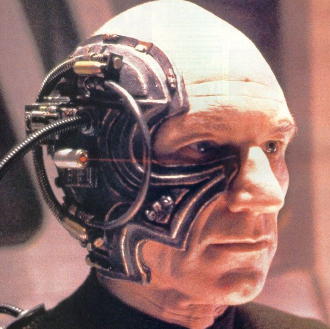In 1985, Donna Haraway’s now famous essay ‘A Cyborg Manifesto’, popularized the idea of the cyborg amongst intellectuals.[1] In her ironic ‘manifesto’, Haraway forged a ground-breaking argument in favour of our increasingly ‘cyborgian’ condition, an argument that continues to have a pervasive influence on the imaginations of writers about technology. What attracted Haraway to the image of the cyborg was its implied blurring of boundaries. A radical Marxist and feminist, Haraway pointed to the way that Western logos had a tendency to construct dichotomies that she saw as being “systemic to the logics and practices of domination.”[2] This includes such central and problematic dualities as self/other, mind/body, culture/nature, male/female, civilized/primitive, reality/appearance and whole/part. All of these constructed dualities stand in the way of the free, truly egalitarian world that she wanted to believe possible. Emancipation, therefore, lay in the destruction of these dualities. Thus, the cyborg.
Haraway already perceived the blurring of the person / animal divide in the natural sciences, and hoped to see it blurred even further. Her dream - a “monstrous”, “blasphemous”, “ironic political myth” - was that the distinction between the emerging man-animal and the machine, which she saw as being increasingly leaky, would disintegrate entirely. In the resulting monster, the cyborg, she saw hope for us. In the image of the cyborg, the opposite of purity, an ironic merger of dualities devoid of the hope of resolution, Haraway saw “bases for new kinds of unity across race, gender, and class.”[3] According to Haraway, great riches are to be found in the erosion of traditional distinctions as it destabilizes the dominant narrative, making room for new networks of meaning.
image taken from here
Haraway’s image is thus far removed from images of cyborgs such as the ‘borg’ from the Star Trek franchise [who I always saw as being basically a metaphor for the dangers of communism]. No, far from this, Haraway’s figure actually stands for openness and flexibility, its radicalness a tool for escaping the hegemonies of the status quo which she saw, paranoically or not, as fundamentally oppressive.
Given this, who wouldn’t want to usher in the Cyborg Era?

genius! thanks duncan - perfect timing
ReplyDeletethats hilarious. . . if you want to borrow the book at some point go ahead, but I also think it's at a.aaaarg.org.
ReplyDeletehey! i need some help! im doing a paper on this text and i have to relate it with the marxist point of view. i have no clue of how to focus it! can you help me please? thanks!
ReplyDelete